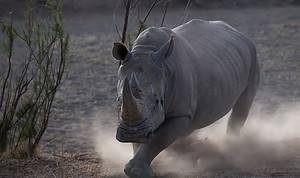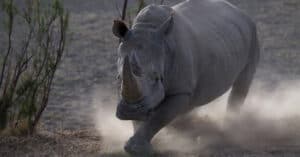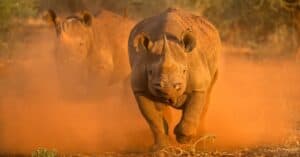Continue reading for our analysis...
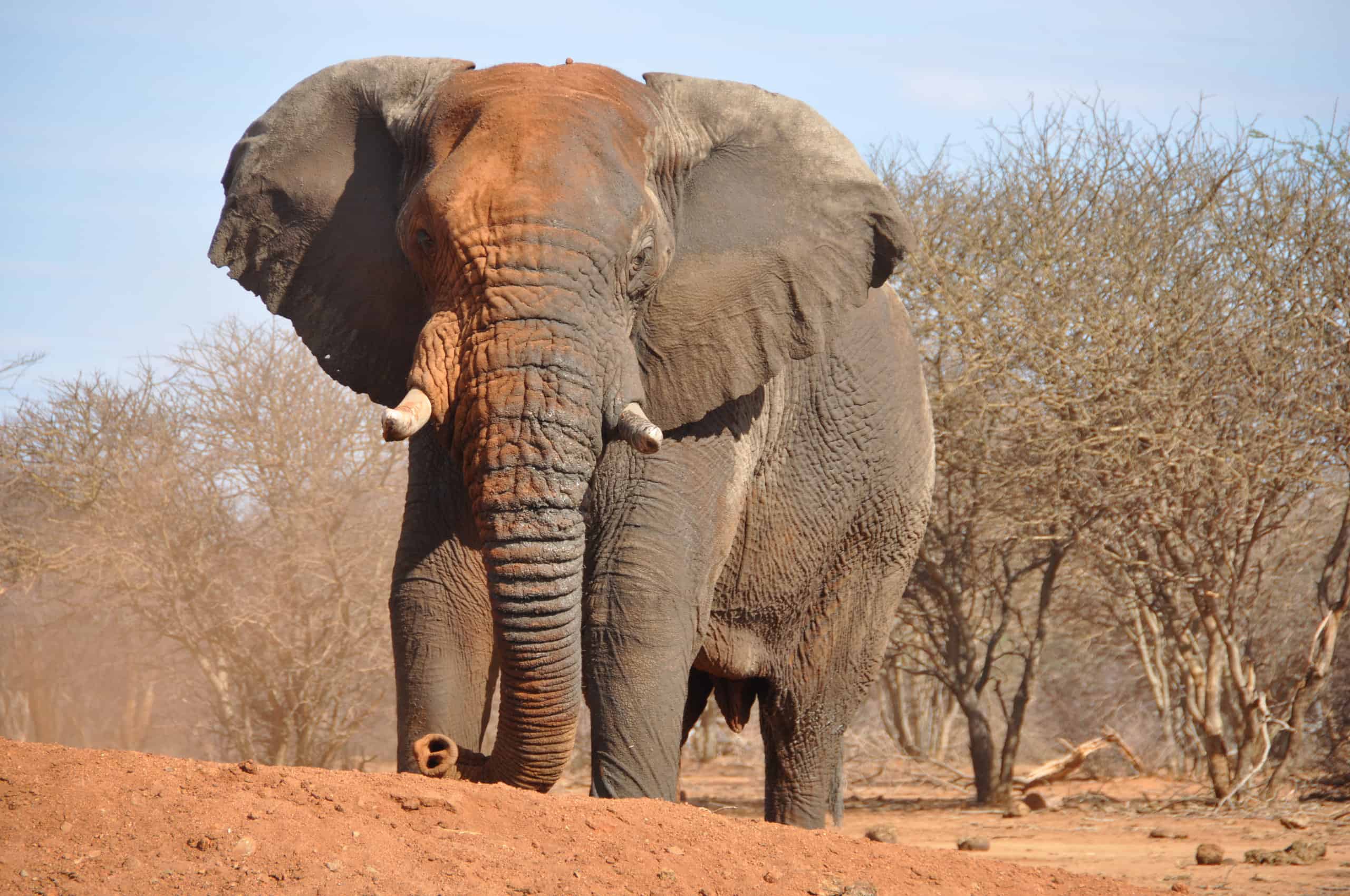
Although rhinos and elephants typically avoid one another, the video below shows what happens when they face off. Both animals are powerful, strong, and have great endurance, but who wins when it gets tense?
Types Of Animals At The Zulu Nyala Game Reserve

African Elephants are one of the many varieties of animals that can be found at the Zulu Nyala Game Reserve.
©iStock.com/USO
Zulu Nyala Game Reserve is located in Hluhluwe, South Africa. Visitors arrive from throughout the world, use conference space, and even get married. There are a variety of animals found throughout the reserve, including cheetahs at the Emdoneni Cat Rehabilitation Center along with the caracal and serval. There are elephants on the game reserve that guests can interact with. These elephants are accustomed to humans because they were orphaned and hand-reared. Overall, the park is home to 40 different animal species.
Is Pooping A Territorial Response For Rhinos?
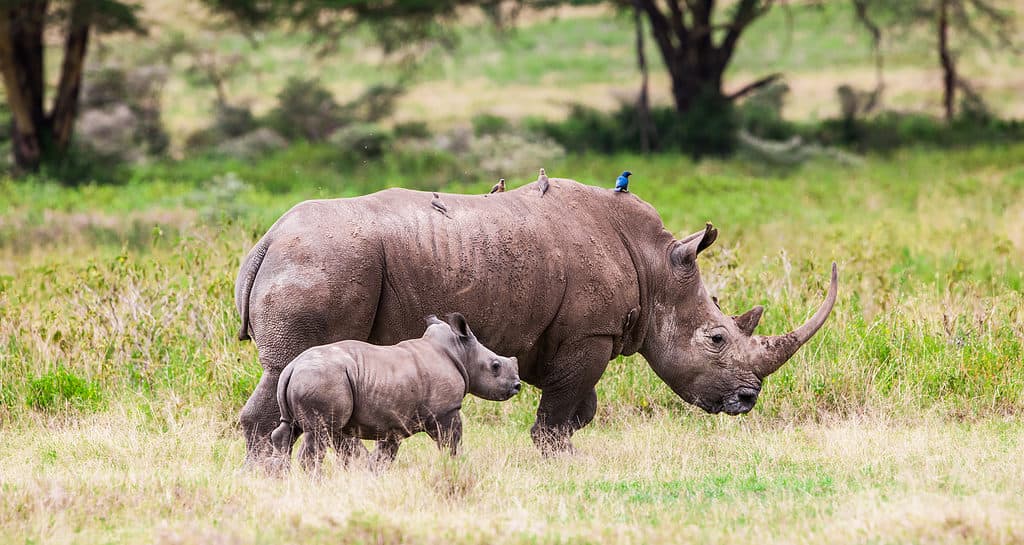
Mother rhinos keep their calves close to protect them from predators (and elephants when necessary!).
©Travel Stock/Shutterstock.com
For rhinos, pooping is a form of communication. Typically, they transform poop into a messenger, letting other rhinos know about one another. The scents are unique per dung pile, with some scents identifying females versus males or young rhinos versus adult rhinos. Additionally, pooping is used to communicate where their territory lies. When they leave a poop pile behind, they also combine it with urine trails as a way to mark their territory, creating odorous borders.
Elephants Establish Dominance
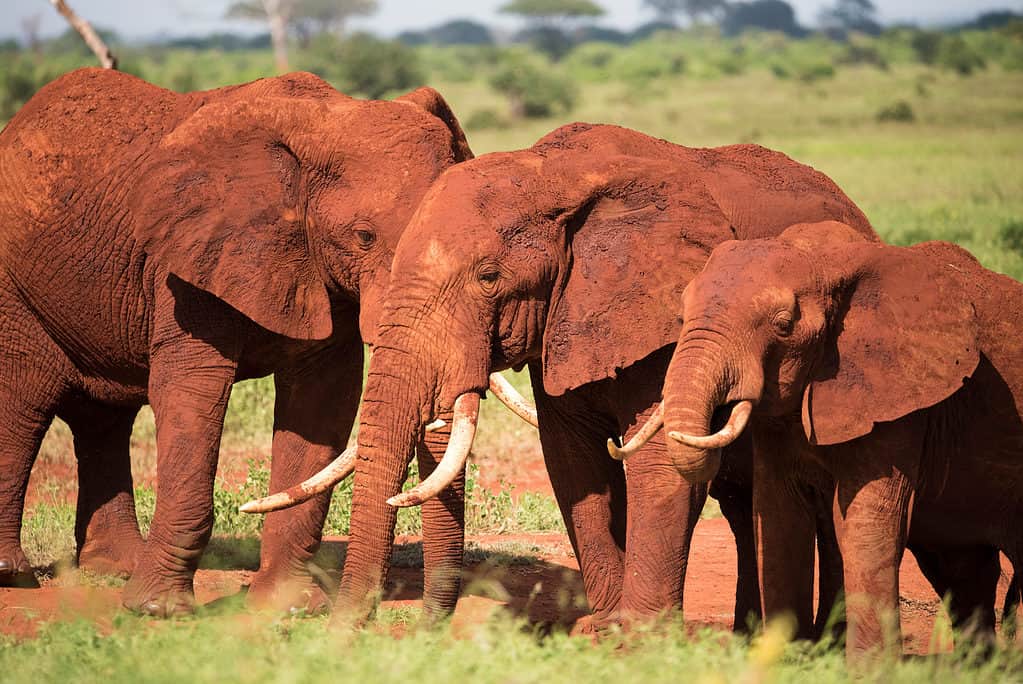
Like Rhinos, African elephants will use dung as a way to communicate and mark territory.
©Prasanth Aravindakshan/Shutterstock.com
Rhinos aren’t small animals. They can weigh thousands of pounds. But in the clip below, the elephants tower over them. Right when the video starts, it takes a second for the camera to focus. A rhino with its horn is facing a huge elephant with its tusks. Within the first two seconds, the rhino starts pooping. That’s when you notice there’s a rhino calf to its left. Not only is the mom rhino naturally territorial, but she also has a baby in tow.
The elephant starts flapping its ears and staring her down as she creates a pile of dung on the ground right behind her. Another (even larger!) elephant comes in from the right to join the stand-off. A third elephant appears as the spectators behind the camera giggle at the rhino’s poopy response. The intimidated mama and baby take steps backward and into the pile she just left.
At one point, the elephant gets too close, and the mama rhino uses her horn against its trunk. That’s when the elephant charges, its tusks down on the rhino’s head, pushing her further and further back. The elephant trumpets as people in the background can be heard banging on the windows, hoping the two animals stop fighting.
Thank you for reading! Have some feedback for us? Contact the AZ Animals editorial team.



